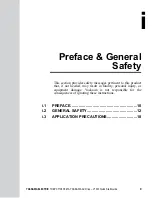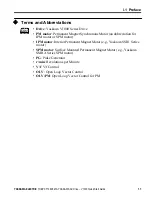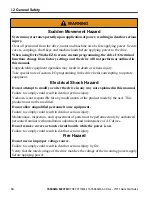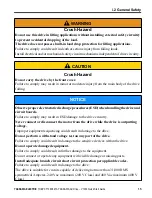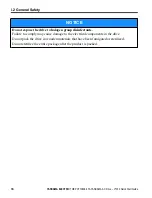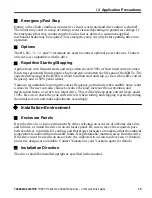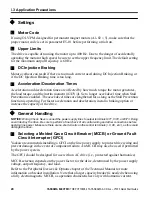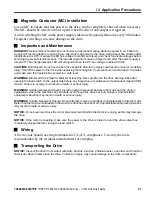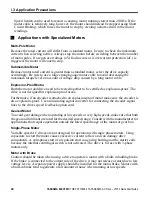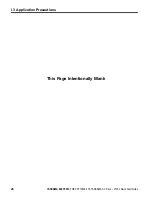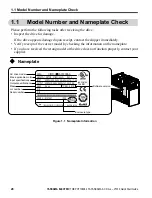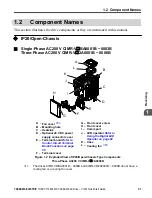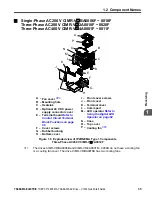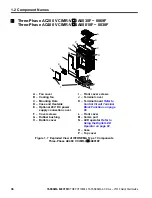
Torque Characteristics
Torque characteristics differ compared to operating the motor directly from line power. The
user should have a full understanding of the load torque characteristics for the application.
Vibration and Shock
The drive settings allow the user to choose between high carrier PWM control and low carrier
PWM. Selecting high carrier PWM can help reduce motor oscillation.
Take particular caution when using a variable speed drive for an application that is
conventionally run from line power at a constant speed. If mechanical resonance occurs, install
shock-absorbing rubber around the base of the motor and enable the Jump frequency selection
parameter to prevent continuous operation in the resonant frequency range.
Audible Noise
Noise created during run varies by the carrier frequency setting. When using a high carrier
frequency, audible noise from the motor is comparable to the motor noise generated when
running from line power. Operating above the rated r/min, however, can create unpleasant
motor noise.
n
Using a Synchronous Motor
• Synchronous motors cannot be started directly from line power. Applications requiring line
power to start should use an induction motor with the drive.
• A single drive is not capable of running multiple synchronous motors at the same time. Use
a standard induction motor for such setups.
• At start, a synchronous motor may rotate slightly in the opposite direction of the Run
command depending on parameter settings and motor type.
• The amount of starting torque that can be generated differs by each control mode and by
the type of motor being used. Set up the motor with the drive after verifying the starting
torque, allowable load characteristics, impact load tolerance, and speed control range.
Contact Yaskawa or your Yaskawa agent if you plan to use a motor that does not fall within
these specifications.
• Braking Torque: In Open Loop Vector Control for PM motors, braking torque is less than
125% when running between 20% to 100% speed, even with a braking resistor. Braking
torque drops to less than half when running at less than 20% speed.
• Load Inertia: In Open Loop Vector Control for PM motors, the allowable load inertia
moment is approximately 50 times higher than the motor inertia moment or less. Contact
Yaskawa or your Yaskawa agent concerning applications with a larger inertia moment.
• Holding Brake: When using a holding brake in Open Loop Vector Control for PM motors,
release the brake prior to starting the motor. Failure to set the proper timing can result in
speed loss. Not for use with conveyor, transport, or hoist type applications.
• Restarting a Coasting Motor: To restart a coasting motor rotating at over 200 Hz while in
the V/f control mode, use the Short Circuit Braking function to first bring the motor to a
stop. Short Circuit Braking requires a special braking resistor. Contact Yaskawa or your
Yaskawa agent for details.
i.3 Application Precautions
YASKAWA ELECTRIC TOEP C710606 47A YASKAWA AC Drive – V1000 Quick Start Guide
23

